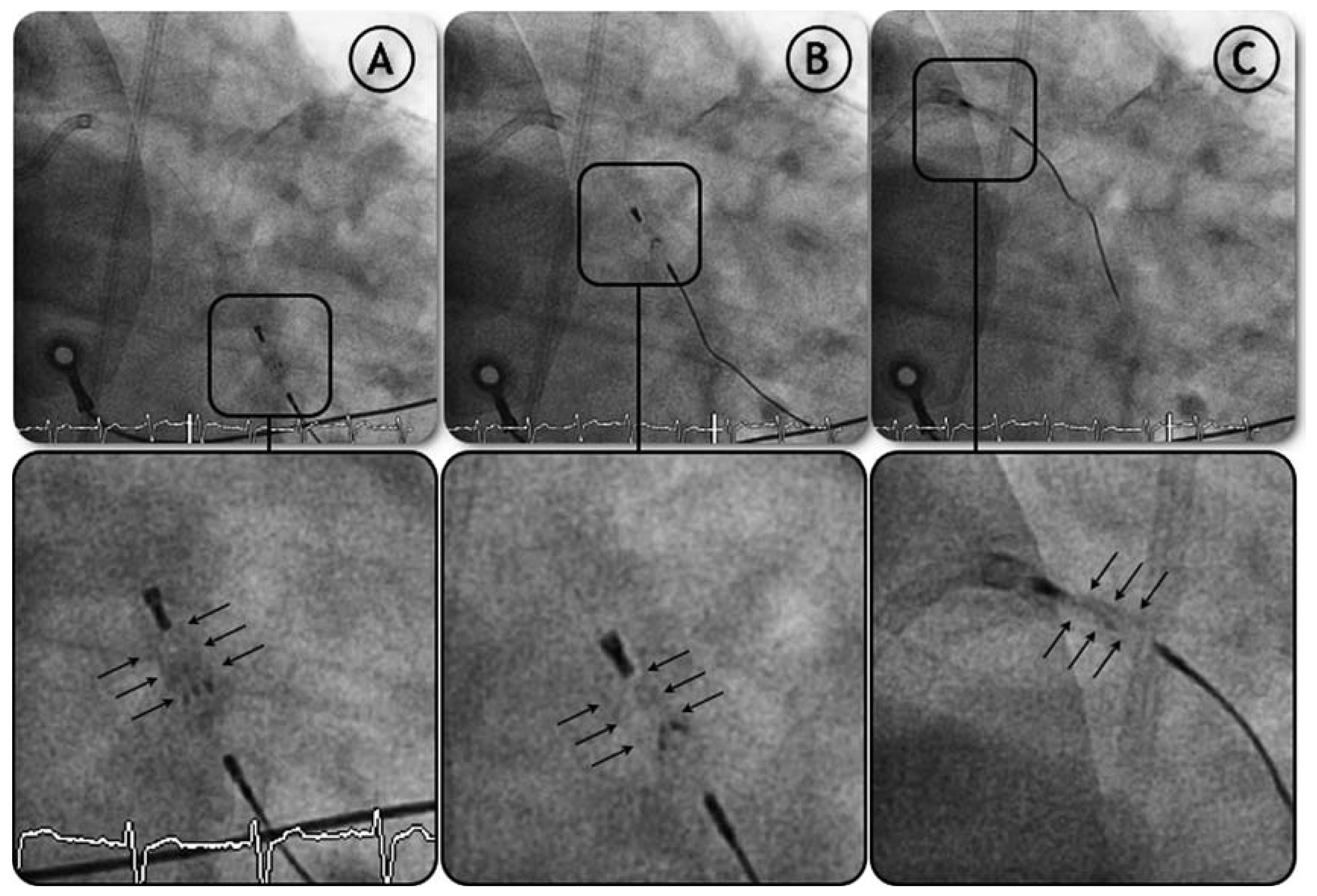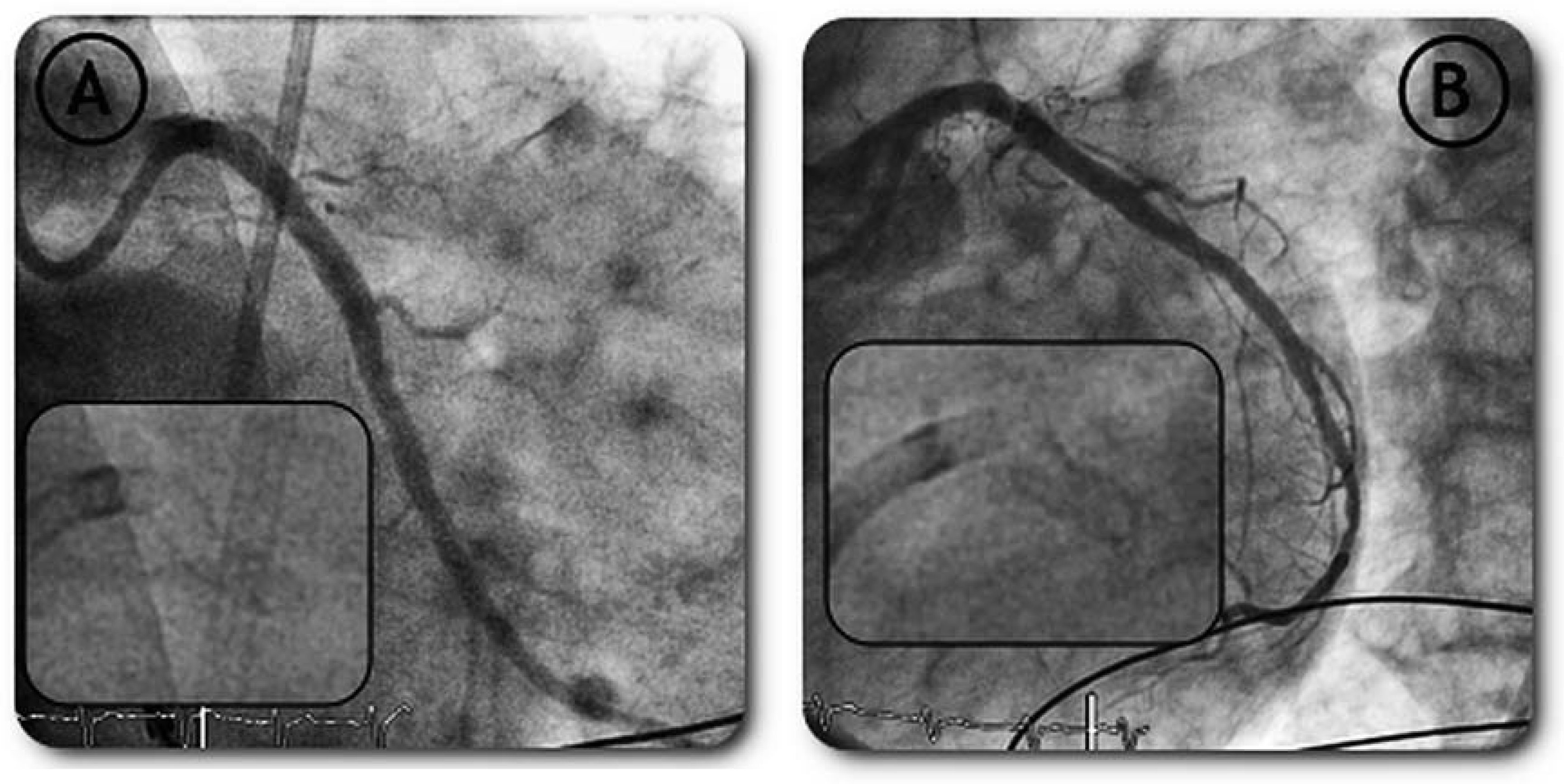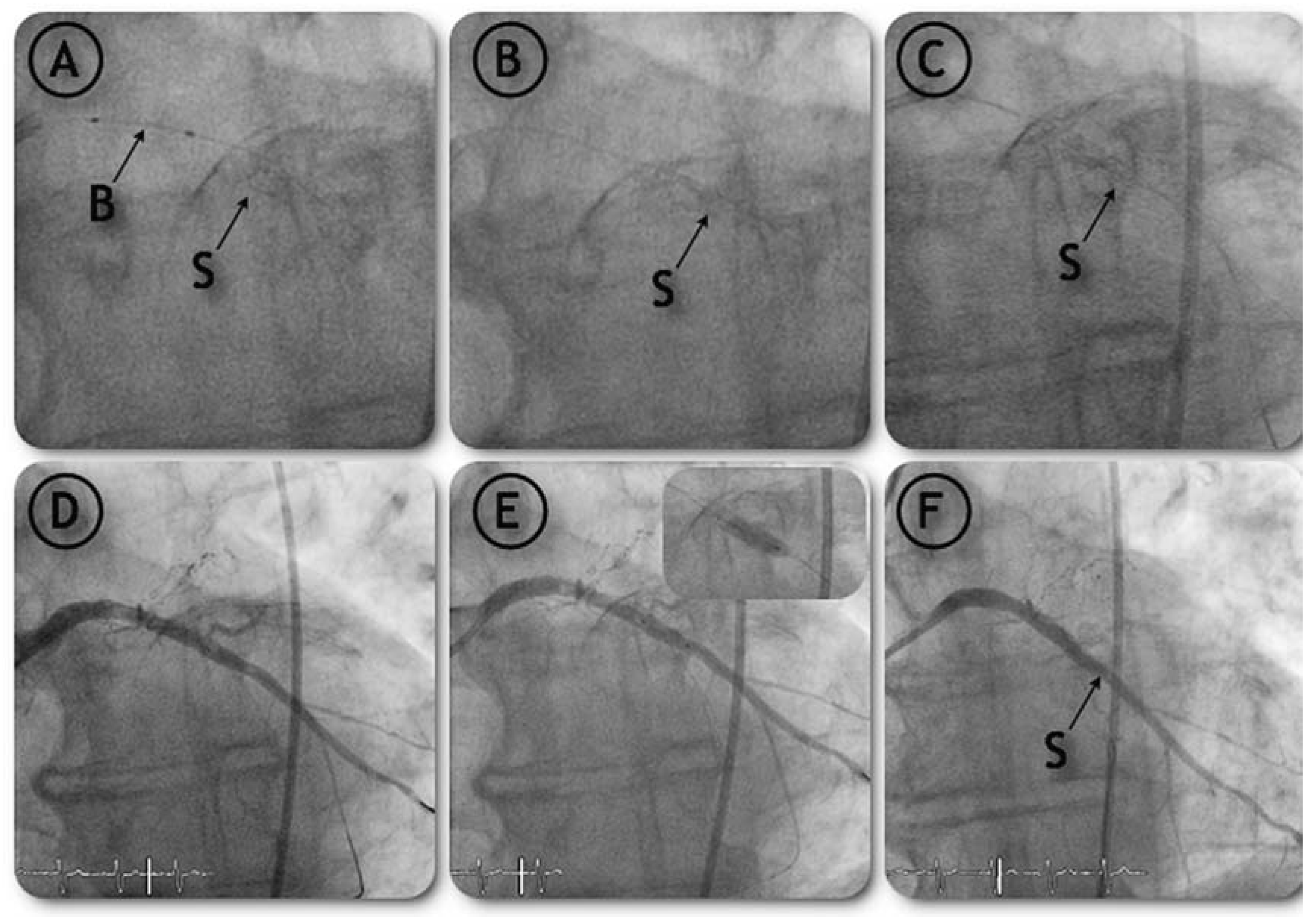Caught Up, Then Pushed Down: The Tribulations of One Underexpanded Coronary Stent
Abstract
Case report
Discussion
Conflicts of Interest
References
- Limbruno, U.; Micheli, A.; De Carlo, M.; et al. Mechanical prevention of distal embolization during primary angioplasty: safety, feasibility, and impact on myocardial reperfusion. Circulation. 2003, 108, 171–6. [Google Scholar] [CrossRef] [PubMed]
- Huang, Z.; Katoh, O.; Nakamura, S.; et al. Evaluation of the PercuSurge Guardwire Plus Temporary Occlusion and Aspiration System during primary angioplasty in acute myocardial infarction. Catheter Cardiovasc Interv. 2003, 60, 443–51. [Google Scholar] [CrossRef] [PubMed]
- Yip, H.K.; Wu, C.J.; Chang, H.W.; et al. Effect of the PercuSurge GuardWire device on the integrity of microvasculature and clinical outcomes during primary transradial coronary intervention in acute myocardial infarction. Am J Cardiol. 2003, 92, 1331–5. [Google Scholar] [CrossRef] [PubMed]
- Orrego, P.S.; Delgado, A.; Piccalo, G.; et al. Distal protection in native coronary arteries during primary angioplasty in acute myocardial infarction: single-center experience. Catheter Cardiovasc Interv. 2003, 60, 152–8. [Google Scholar] [CrossRef] [PubMed]
- Nakamura, T.; Kubo, N.; Seki, Y.; et al. Effects of a distal protection device during primary stenting in patients with acute anterior myocardial infarction. Circ J. 2004, 68, 763–8. [Google Scholar] [CrossRef] [PubMed]
- Guigauri, P.; Dauerman, H.L. A novel use for a distal embolic protection device: stent retrieval. J Invasive Cardiol. 2005, 17, 183–4. [Google Scholar] [PubMed]
- Webb, J.G.; Solankhi, N.; Carere, R.G. Facilitation of stent retention and retrieval with an emboli containment device. Catheter Cardiovasc Interv. 2000, 50, 215–7. [Google Scholar] [CrossRef]





© 2007 by the authors. Attribution - Non-Commercial - NoDerivatives 4.0.
Share and Cite
Baeriswyl, G.; Adjordan, P.; Cook, S. Caught Up, Then Pushed Down: The Tribulations of One Underexpanded Coronary Stent. Cardiovasc. Med. 2007, 10, 366. https://doi.org/10.4414/cvm.2007.01278
Baeriswyl G, Adjordan P, Cook S. Caught Up, Then Pushed Down: The Tribulations of One Underexpanded Coronary Stent. Cardiovascular Medicine. 2007; 10(11):366. https://doi.org/10.4414/cvm.2007.01278
Chicago/Turabian StyleBaeriswyl, Gérard, Patrick Adjordan, and Stéphane Cook. 2007. "Caught Up, Then Pushed Down: The Tribulations of One Underexpanded Coronary Stent" Cardiovascular Medicine 10, no. 11: 366. https://doi.org/10.4414/cvm.2007.01278
APA StyleBaeriswyl, G., Adjordan, P., & Cook, S. (2007). Caught Up, Then Pushed Down: The Tribulations of One Underexpanded Coronary Stent. Cardiovascular Medicine, 10(11), 366. https://doi.org/10.4414/cvm.2007.01278



